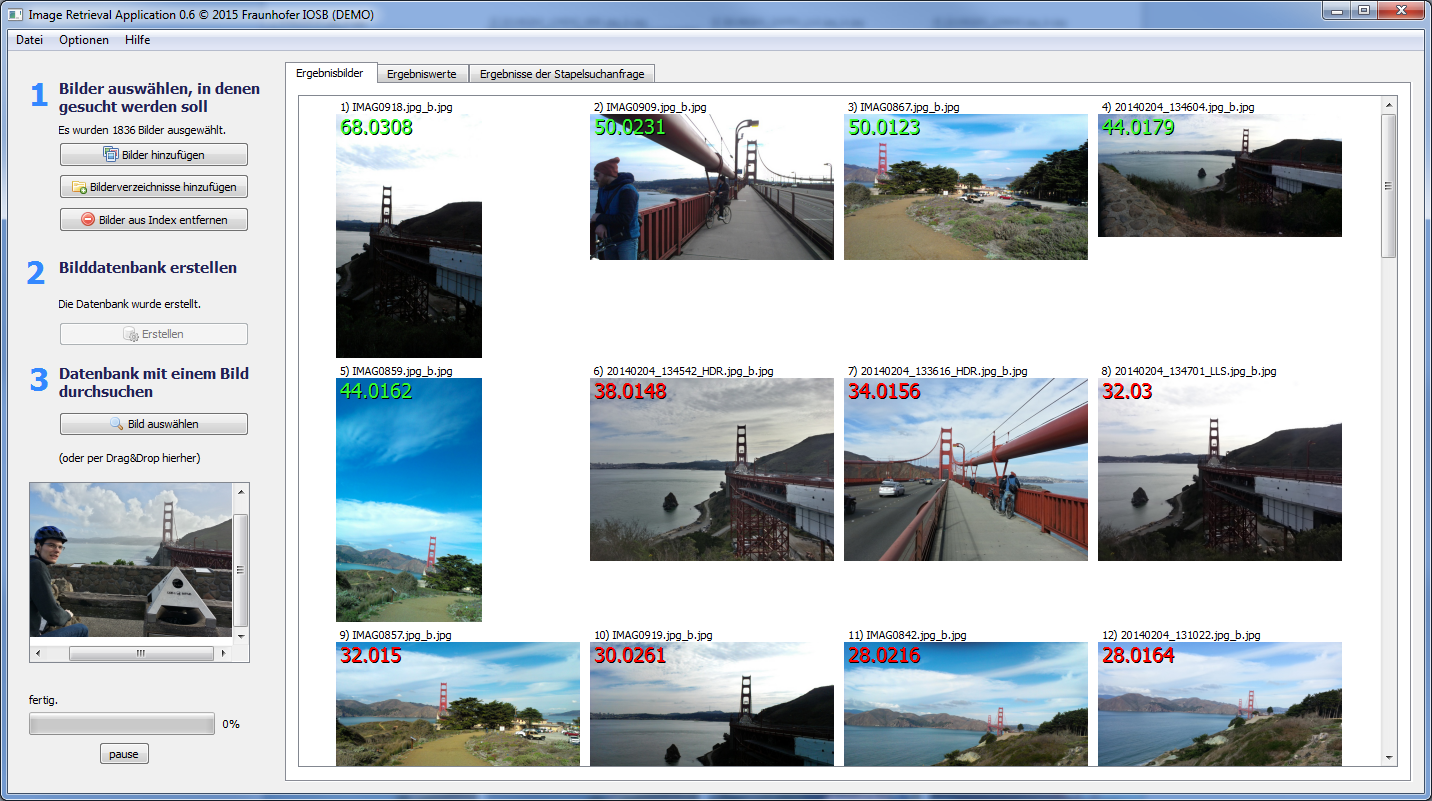Image search in large amounts of data
Pattern Recognition is an image search in large amounts of data. In the age of digitalisation, photography is no longer limited by expensive film material, development services and tedious archiving in photo albums. The camera is integrated in the smartphone, always ready to hand or fits in your pocket as a miniature device. Even storage space is available on huge hard disks in almost any quantity. However, this beneficial development also brings with it problems with which most users of digital cameras are familiar: the overview of the photo stock is lost, the search for more pictures with a similar motif is time-consuming and many pictures are bogged down on the hard drive as hidden treasures unnoticed in the shadows.
Approaches for automatic image retrieval have been dealt with for a long time, and search engine providers, among others, have been intensively dealing with this topic. Previous approaches primarily aim to characterise the query image as a whole. Features such as colours or colour distributions play a role in this process.
 Fraunhofer Institute of Optronics, System Technologies and Image Exploitation IOSB
Fraunhofer Institute of Optronics, System Technologies and Image Exploitation IOSB 